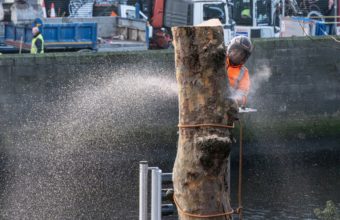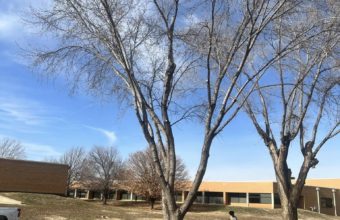When pruning trees, selecting the right branches to cut is crucial for maintaining the tree’s health, safety, and aesthetic appeal.
Here are the types of branches you should focus on removing…
1. Dead or Dying Branches
- Why to Cut – Removing dead or dying branches helps prevent decay organisms from entering the tree and reduces the risk of falling branches, which can be a safety hazard.
2. Diseased Branches
- Why to Cut – Cutting out diseased branches can prevent the spread of infection to other parts of the tree or neighboring trees.
- Identification – Look for signs of disease, such as unusual growth patterns, discolored leaves, or the presence of fungi.
3. Damaged Branches
- Why to Cut – Branches damaged by storms, animals, or human activity can create entry points for pests and diseases and are often structurally weak, posing a risk of breaking off.
4. Crossing or Rubbing Branches
- Why to Cut – Branches that rub against each other can create wounds and entry points for disease. Removing one of the crossing branches allows the remaining branch to develop without interference.
5. Water Sprouts and Suckers
- Why to Cut – Water sprouts (upright shoots that grow from the trunk or branches) and suckers (shoots that grow from the base of the tree or roots) can divert energy from the main structure of the tree, leading to a less desirable shape and weaker overall structure.
- Identification – These are often fast-growing, straight shoots that appear after the tree has been stressed or overly pruned.
6. Overly Dense Branches
- Why to Cut – Thinning the canopy by removing some of the inner branches can improve air circulation and light penetration, which helps reduce the risk of disease and promotes healthier growth.
7. Competing Leaders
- Why to Cut – In trees meant to have a single main trunk, competing leaders (main vertical branches that compete with the central leader) can weaken the tree’s structure, making it more susceptible to damage from wind or the weight of snow and ice.
General Guidelines
- Timing – The best time for pruning most trees is during the dormant season, although dead, damaged, or diseased branches can be removed at any time as they are identified.
- Proportion – As a general rule, try not to remove more than 25% of a tree’s canopy in a single year to avoid stressing the tree.
- Technique – Make clean cuts just outside the branch collar without leaving stubs. Avoid flush cuts that can damage the trunk and slow the healing process.
Safety and Tree Health
Pruning can significantly affect a tree’s health and growth, so it’s important to do it carefully and thoughtfully. For large trees, trees near power lines, or when any branch removal involves climbing or using a ladder, consider hiring a professional arborist to ensure the job is done safely and correctly.






